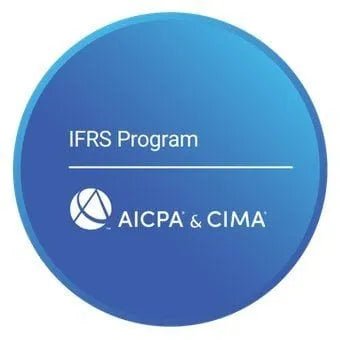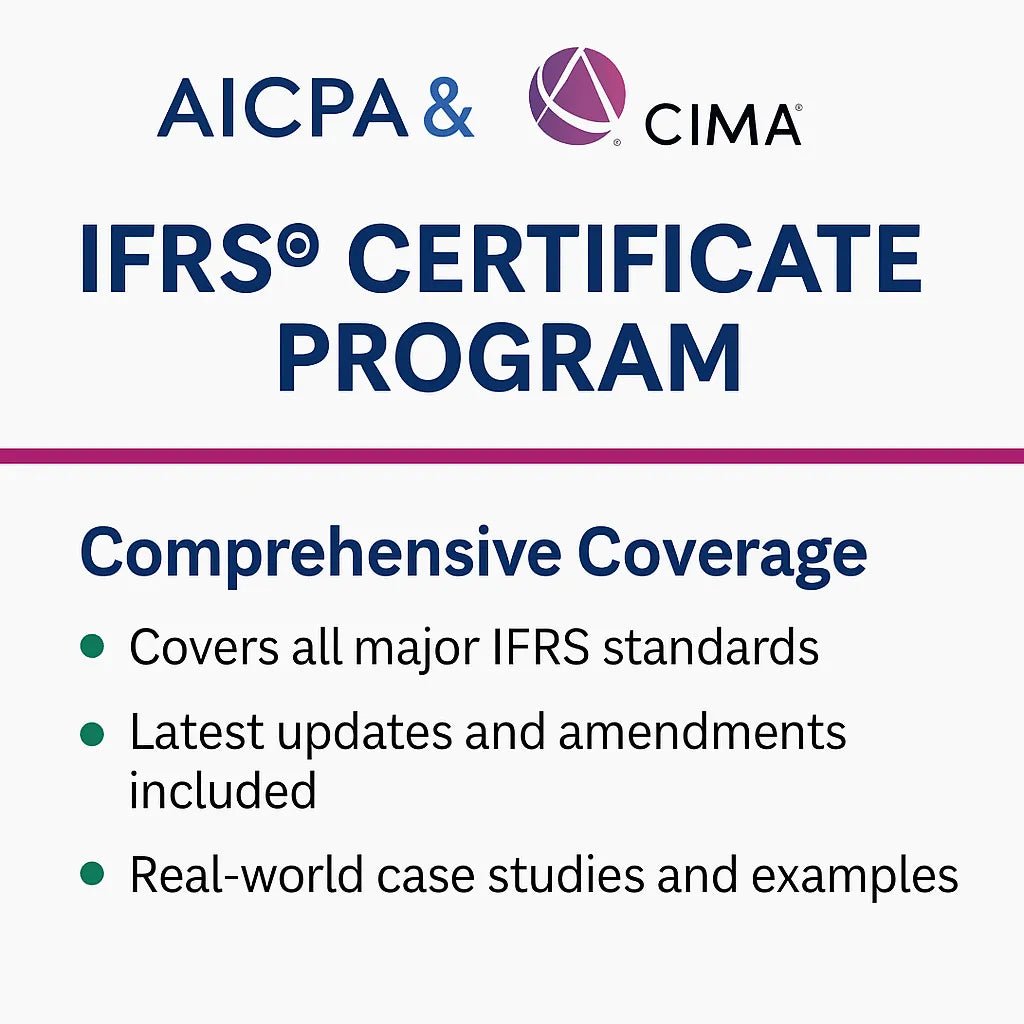Top 10 ACCA AFM Common Mistakes Students Make
Top 10 ACCA AFM Mistakes That Cost Students Marks
Many students lose marks in ACCA AFM not because they don’t know the syllabus, but because they repeat the same avoidable mistakes. These errors show up again and again in examiner reports and can seriously affect exam performance.
This simplified guide walks you through the top 10 AFM mistakes — with clear examples, examiner insights, and easy prevention tips.
Understanding these recurring pitfalls becomes essential when considering AFM's role within the ACCA qualification structure, as a strategic professional paper that tests readiness for senior financial roles. Even minor technical oversights can cascade into significant mark loss across multiple requirements.
Mistake 1: Wrong Direction in Currency Conversion (Most Common)
The mistake:
Students convert currencies the wrong way around, especially with USD/EUR style pairs.
Example:
A company receives USD 10 million. Spot rate: USD/EUR = 0.85.
Many students multiply instead of dividing, giving €8.5m instead of the correct €11.76m.
How to avoid it:
- Identify the reporting currency first.
- Draw a simple cash flow arrow: USD → EUR.
- Check if your answer makes sense (does the business gain or lose?).
- Practise conversions with different quote formats.
Mistake 2: Incorrect Free Cash Flow Calculations
The mistake:
Deducting interest when calculating Free Cash Flow to the Firm (FCFF).
Examiner note:
“Common mistakes included deducting interest when calculating free cash flow to the firm.”
Correct method:
FCFF = Operating cash flows – Tax + Depreciation – Capex – Working capital changes
Do not deduct interest.
Discount at WACC → Enterprise value
Enterprise value – Net debt → Equity value
Mistake 3: Basis Errors in Futures Hedging
The mistake:
Students mix up:
- Current vs expected futures prices
- Basis at maturity (should be zero)
- Time-based basis reductions
Remember:
- Basis = Spot – Futures price
- Expected basis at contract maturity = 0
- Basis reduces smoothly as expiry approaches
Mistake 4: Ignoring Working Capital and Tax Effects
The mistake:
- Forgetting to calculate incremental working capital
- Forgetting to release working capital in the final year
- Applying tax incorrectly
- Skipping capital allowance workings
Fix it with this checklist:
- Working capital = % of incremental revenue
- Calculate it year by year
- Release 100% in the final year
- Apply tax rules to operating cash flows only
Mistake 5: Wrong Inputs in Black-Scholes Calculations
The mistake:
- Swapping strike price and asset price
- Using months instead of years
- Choosing incorrect volatility
- Confusing puts and calls
Quick input rules:
- Underlying price = current asset value
- Exercise/strike price = price paid/received
- Time = years (months ÷12)
- Volatility = annual %
- Identify clearly: Call or Put?
Mistake 6: Errors in Interest Rate Collar Calculations
This is one of the hardest areas.
Typical errors:
- Wrong option combination
- Incorrect contract quantities
- Ignoring net premium
- Incorrect exercise logic
Simple solution structure:
- Identify whether you need a cap, floor, or collar
- Choose option strategy (buy + sell combinations)
- Calculate number of contracts
- Work out net premium (paid – received)
- Assess outcomes under different rate scenarios
Mistake 7: Poor Professional Skills Integration
Students treat professional skills as a separate task.
It’s not.
Avoid:
- Adding a “scepticism paragraph” at the end
- Writing thin or shallow commentary
- Ignoring commercial implications
Do this instead:
- Challenge assumptions during calculations
- Explain business impact, not just numbers
- Use a clean report format
- Show commercial judgement throughout
Mistake 8: Errors in Merger Gain Distribution
The mistake:
- Wrong share exchange ratio
- Mixing pre- and post-acquisition share numbers
- Incorrect synergy or gain allocation
- Confusing percentage premiums
Correct approach:
- Calculate standalone values
- Calculate combined value including synergies
- Compute total gain
- Allocate gain per the agreed ratio
- Show shareholder impact clearly
Mistake 9: Incomplete Settlement Steps in Multilateral Netting
Students calculate net amounts correctly, but lose marks by not showing correct settlement transactions.
Checklist to avoid losing marks:
- State net positions for each entity
- Follow the settlement order given
- Ensure all settlements balance mathematically
- Apply correct currency conversions where needed
Mistake 10: Poor Report Writing and Weak Communication
Students lose easy marks because of:
- No executive summary
- No headings
- Bullet points without explanation
- Missing conclusion
- No clear recommendation
Examiner Guidance: "Far too many candidates miss out on a mark they have nearly earned by failing to finish their report with a conclusion."
Communication Excellence Framework:
- Executive summary with key recommendations upfront
- Clear section headings matching the requirement structure
- Technical analysis integrated with business narrative
- Explicit assumptions and limitations discussion
- Comprehensive conclusions with actionable next steps
How to Avoid These AFM Mistakes: Simple Strategies
1. Build an Error Log
Track:
- Conceptual errors
- Calculation errors
- Misreading errors
- Presentation errors
Review it weekly.
2. Use Real-Time Checks
Ask:
- Is this number sensible?
- Are units consistent?
- Have I used millions vs thousands correctly?
- Does the discount rate match the cash flow type?
3. Practise Professional Skills Every Time
Integrate:
- Business impact
- Commercial judgement
- Risk awareness
- Scepticism
4. Use High-Quality AFM Materials
Good materials build:
- Pattern recognition
- Exam-style working habits
- Structured responses
- Checking techniques
5. Maximise Marks Under Pressure
If stuck:
- Make reasonable assumptions
- Show workings clearly
- Move on and earn marks elsewhere
- Avoid blank sections
Professional Development Resources
Structured Learning Support: For students experiencing persistent technical errors or professional skills challenges, comprehensive AFM coaching provides personalized feedback and systematic error correction strategies that dramatically improve both calculation accuracy and professional competencies.
Practice Material Quality: Consistent exposure to examination-standard questions through quality AFM study materials builds error recognition patterns and develops checking disciplines essential for examination success.
Advanced Error Prevention Frameworks
Pre-Calculation Planning Discipline
Strategic Verification:
- Outline the complete calculation methodology before detailed execution
- Verify chosen approaches match specific question requirements precisely
- Identify potential error sources in complex multi-step calculations
- Establish checking procedures for high-risk calculation areas
Recovery Strategies for Examination Performance
Maintaining Momentum Under Pressure: When encountering unexpectedly complex calculations, maintain forward progress rather than pursuing perfect technical solutions. Make reasonable assumptions, explain approaches clearly, and continue with subsequent requirements to optimize total mark accumulation.
Partial Credit Maximization: Sound methodology with clear working displays earns substantial credit even when final answers contain errors. Focus on demonstrating a complete understanding of the procedures rather than just producing correct numerical results.
Long-Term Mistake Prevention: Building Professional Habits to avoid ACCA AFM mistakes
Quality Control Integration
Professional Development: Transform mistake prevention from an examination technique into a professional habit formation. Senior financial roles require the same attention to detail, systematic verification, and quality assurance that AFM demands.
Continuous Improvement Mindset
Career Application: Use AFM preparation as an opportunity to develop error prevention frameworks that serve long-term professional effectiveness. Investment banking, corporate finance, and treasury management all require the systematic accuracy and professional discipline that comprehensive AFM preparation develops.
Conclusion: ACCA AFM mistakes
These top 10 ACCA AFM common mistakes represent predictable challenges that systematic preparation can eliminate. Success lies not in avoiding all errors, but in developing robust prevention systems, recovery strategies, and quality assurance approaches that function effectively under examination pressure.
Technical competence in Advanced Financial Management requires both deep conceptual understanding and disciplined procedural execution. Students who invest time analyzing mistake patterns and building systematic prevention strategies consistently outperform those relying solely on technical knowledge without procedural discipline.
Use every practice mistake as valuable diagnostic information. Build systematic approaches that reduce error probability while developing resilience strategies for unexpected examination challenges. This comprehensive approach fosters both technical competence and examination confidence, which are essential for AFM success.
Other popular AFM blogs
FAQs
ACCA blogs
Follow these links to help you prepare for the ACCA exams
IFRS blogs
Follow these blogs to stay updated on IFRS
Formats
Use these formats for day to day operations
- Account closure format
- Insurance claim letter format
- Transfer certification application format
- Resignation acceptance letter format
- School leaving certificate format
- Letter of experience insurance
- Insurance cancellation letter format
- format for Thank you email after an interview
- application for teaching job
- ACCA PER examples
- Leave application for office
- Marketing manager cover letter
- Nursing job cover letter
- Leave letter to class teacher
- leave letter in hindi for fever
- Leave letter for stomach pain
- Leave application in hindi
- Relieving letter format
Interview questions
Link for blogs for various interview questions with answers
- Strategic interview questions
- Accounts payable interview questions
- IFRS interview questions
- CA Articleship interview questions
- AML and KYC interview questions
- Accounts receivable interview questions
- GST interview questions
- ESG Interview questions
- IFRS 17 interview questions
- Concentric Advisors interview questions
- Questions to ask at the end of an interview
- Business Analyst interview questions
- Interview outfits for women
- Why should we hire you question
leave application format
- Leave application for office
- Leave application for school
- Leave application for sick leave
- Leave application for marriage
- leave application for personal reasons
- Maternity leave application
- Leave application for sister marriage
- Casual leave application
- Leave application for 2 days
- Leave application for urgent work
- Application for sick leave to school
- One day leave application
- Half day leave application
- Leave application for fever
- Privilege leave
- Leave letter to school due to stomach pain
- How to write leave letter
Insurance blogs
- Sample letter of appeal for reconsideration of insurance claims
- How to increase insurance agent productivity
- UAE unemployment insurance
- Insurance cancellation letter
- Insurance claim letter format
- Insured closing letter formats
- ACORD cancellation form
- Provision for insurance claim
- Cricket insurance claim
- Insurance to protect lawsuits for business owners
- Certificate holder insurance
- does homeowners insurance cover mold
- sample letter asking for homeowner right to repair for insurance
- Does homeowners insurance cover roof leaks














Leave a comment